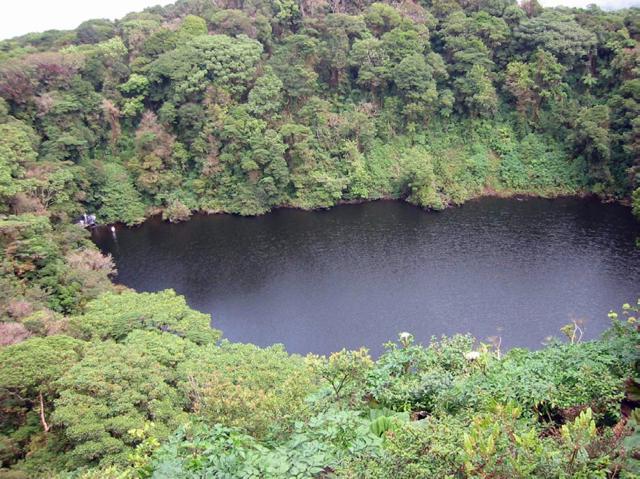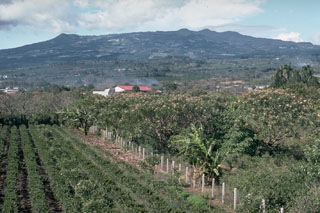Report on Barva (Costa Rica) — September 2003
Bulletin of the Global Volcanism Network, vol. 28, no. 9 (September 2003)
Managing Editor: Edward Venzke.
Barva (Costa Rica) Two crater lakes visited in December 2002
Please cite this report as:
Global Volcanism Program, 2003. Report on Barva (Costa Rica) (Venzke, E., ed.). Bulletin of the Global Volcanism Network, 28:9. Smithsonian Institution. https://doi.org/10.5479/si.GVP.BGVN200309-345050
Barva
Costa Rica
10.135°N, 84.1°W; summit elev. 2906 m
All times are local (unless otherwise noted)
Geologist Raul Mora, along with Carlos Ramirez and Maritta Alvarado, visited Barva volcano during December 2002 and investigated the Barva and Copey crater lakes. Located in a small crater, the Barva crater lake (figure 1) was very clear; at 5 m from the shore the water had a temperature of 11-12°C with a pH of 4-5. Water in the Copey lake was amber colored and very cloudy, with a temperature at 0.5 m depth of 12.2°C and a pH of 5. Near-surface black lapilli deposits were found that were more than a meter thick near the Barva lake, but became more irregular in thickness around the Copey lake.
 |
Figure 1. Photograph of the Barva crater lake, December 2002. The lake has an area of 9,000 m2 and a depth of ~ 7.7 m. Courtesy of Raul Mora. |
Geological Summary. One of three massive volcanoes close to the capital city of San José, Volcán Barva (Barba) is a complex volcano with multiple peaks and flank vents. Three peaks visible from the Central Valley give it the common local name of Las Tres Marías. The voluminous andesitic-to-dacitic Tiribí Tuff, exposed in the Central Valley, was erupted about 322,000 years ago. The summit area is dominated by a 2 x 3 km crater open to the ESE. One of the cones on the upper N flank contains a crater lake. Cones are also found on the S flanks, along with lava flows. The Los Angeles flow, one of the most recent, descends nearly to the city of Heredia. A large Plinian eruption occurred during the early Holocene. Eruptions were reported in 1760 or 1766, 1776? (also a mudflow), and 1867, but later visits to the summit did not provide evidence for recent activity.
Information Contacts: Raul Mora Amador, Red Sismologica Nacional, Laboratorio de Sismologia, Vulcanologia y Exploracion Geofisica, Universidad de Costa Rica, Apartado 214 (2060) UCR, San Jose, Costa Rica (URL: http://rsn.ucr.ac.cr/).

